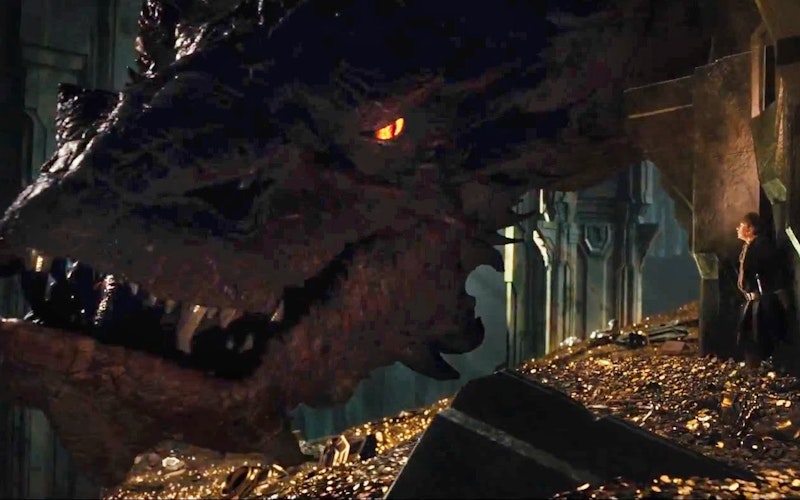
Movies
The Hobbit, Smaug, and Remembering Who the Real Enemy Is
Smaug—the calamitous dragon of J.R.R. Tolkien’s 1937 novel The Hobbit—gets top billing in the second installment of Peter Jackson’s big-screen adaptation. But in The Hobbit: The Desolation of Smaug, the dragon isn’t the one we should fear most.
In fact, the tag line from another blockbuster adaptation of a beloved novel, The Hunger Games: Catching Fire, equally applies here: “Remember who the real enemy is.” This is helpful advice for both the wizards, hobbits, dwarves, and elves in Tolkien’s tale and for today’s Christians, even those whose daily spiritual battles are a bit more prosaic than these big-screen adventures.
The Desolation of Smaug finds our hobbit hero Bilbo (Martin Freeman) and the band of dwarves he has joined at the foot of the Lonely Mountain, where Smaug and their stolen treasure dwells. The dragon is a threat, to be sure, but this journey has been fraught with others. Early on in the film the company encounters Beorn (Mikael Persbrandt), a hulking bear who transforms into a slightly less intimidating man. Beorn despises dwarves, but he hates the marauding Orcs on their trail even more, so he decides to help the desperate travelers. Later, the dwarves come across woodland elves who take them prisoner (they’ll tolerate no disturbance of their kingdom), then a town of men at the edge of the Lonely Mountain, where they’re eyed with equal suspicion. In fact, the film charts a series of fiefdoms, each furtively guarding their land under the shadow of the dragon.
It’s an atmosphere of cloistered dread, one that resembles our world in many ways. In the aftermath of the Tower of Babel, humankind has gone on carve out countless little kingdoms. Nation states are among these, certainly, but the Christian subculture can be considered one as well. Often we’re so concerned with who is in and who is out we tend to forget that all of God’s creatures are in this together (this being his creation-restoring narrative).
TC Podcast: Tolkien Theology
Humanity has lived in suspicion and fearfulness ever since the Fall. We’ve been afraid of each other, but also of some variation on Smaug—natural disaster, nuclear annihilation, political manipulation, environmental collapse. We despair over such things, and the ripple effect is an increasing agitation with our neighbors. And so nations stockpile weapons, subcultures clash over conflicting values, and divisions even fester within the Christian church.
The real enemy, though, is the one exploiting this unease with and distrust of each other. Scripture, interestingly, identifies Satan as a dragon—the primordial Smaug—yet he’s also described as the great deceiver, the one who has led the whole world astray. And as the oft-cited aphorism goes, the greatest trick the Devil ever pulled was convincing the world he didn't exist.
In The Hobbit: The Desolation of Smaug, we get to meet Tolkien’s version of this foe. Near the end of the film, the wizard Gandalf (Ian McKellen) leaves Bilbo and the dwarves to find the source of the Orc attackers. Discovering their stronghold, he demands of the Orc commander, “Where is your master?” The chilling, biblical response? “We are legion.” What follows is a stunning visual display in a movie full of them: wisps of black swirling around Gandalf and eventually congealing into the obscure form of Sauron, the fallen angel and corrupting force of Tolkien’s mythology.
Like this Sauron, our true enemy pulls strings from behind the shadows. And so, instead of warily regarding him as a doomed but still destructive force, we give in to the fear of this world and fight each other. Jackson’s film is a rousing adventure, yet it’s also a reminder that we sometimes miss the forest for the Smaugs.
Topics: Movies